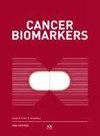浸润性胶质瘤伴FGFR改变:组织学特征、基因改变和潜在临床意义。
IF 2.2
4区 医学
Q3 ONCOLOGY
引用次数: 0
摘要
背景:成纤维细胞生长因子受体(FGFRs)在癌症中经常发生改变,并呈现出潜在的治疗途径。然而,浸润性胶质瘤(IGs)中FGFR改变的类型和流行程度需要进一步研究。目的:了解IGs中FGFR改变的患病率/类型。方法:我们回顾了387例fgfr突变胶质瘤患者的临床病理和基因组改变。肿瘤通过DNA下一代测序检测体细胞突变,小组询问205个基因。为了进行比较,我们查询了cBioPortal数据库,以确定fgfr改变的IGs。结果:鉴定出14例(3.6%)fgfr突变肿瘤,包括11例胶质母细胞瘤、异柠檬酸脱氢酶(IDH)野生型(GBM-IDH-WT)、2例少突胶质细胞瘤和1例IDH突变型星形细胞瘤。fgfr改变的IGs显示内分泌样毛细血管、微血管增生、坏死、少突胶质样细胞、纤维蛋白血栓、微钙化和结节生长。FGFR3是最常见的FGFR基因改变(64.3%)。fgfr改变的IGs中最常见的附加突变是TERTp、CDKN2A/B、PTEN、CDK4、MDM2和TP53。FGFR3仅在GBM-IDH-WT中观察到改变。在fgfr3改变的胶质瘤中很少发现EGFR改变。结论:IGs的组织学特征与FGFR改变相关。FGFR3- tacc3融合和FGFR3扩增是IGs中最常见的FGFR改变。FGFR改变是IGs亚群中罕见但潜在可行的治疗靶点。本文章由计算机程序翻译,如有差异,请以英文原文为准。
Infiltrating gliomas with FGFR alterations: Histologic features, genetic alterations, and potential clinical implications.
BACKGROUND
Fibroblast growth factor receptors (FGFRs) are frequently altered in cancers and present a potential therapeutic avenue. However, the type and prevalence of FGFR alterations in infiltrating gliomas (IGs) needs further investigation.
OBJECTIVE
To understand the prevalence/type of FGFR alterations in IGs.
METHODS
We reviewed clinicopathologic and genomic alterations of FGFR-mutant gliomas in a cohort of 387 patients. Tumors were examined by DNA next-generation sequencing for somatic mutations with a panel interrogating 205-genes. For comparison, cBioPortal databases were queried to identify FGFR-altered IGs.
RESULTS
Fourteen patients (3.6%) with FGFR-mutant tumors were identified including 11 glioblastomas, Isocitrate hydrogenase (IDH) - wildtype (GBM-IDH-WT), 2 oligodendrogliomas, and 1 astrocytoma IDH-mutant. FGFR-altered IGs showed endocrinoid capillaries, microvascular proliferation, necrosis, oligodendroglioma-like cells, fibrin thrombi, microcalcifications, and nodular growth. FGFR3 was the most commonly altered FGFR gene (64.3%). The most common additional mutations in FGFR-altered IGs were TERTp, CDKN2A/B, PTEN, CDK4, MDM2, and TP53. FGFR3 alterations were only observed in GBM-IDH-WT. EGFR alterations were rarely identified in FGFR3-altered gliomas.
CONCLUSIONS
Histologic features correlate with FGFR alterations in IGs. FGFR3-TACC3 fusion and FGFR3 amplification are the most common FGFR alterations in IGs. FGFR alterations are a rare, but potentially viable, therapeutic target in asubset of IGs.
求助全文
通过发布文献求助,成功后即可免费获取论文全文。
去求助
来源期刊

Cancer Biomarkers
ONCOLOGY-
CiteScore
5.20
自引率
3.20%
发文量
195
审稿时长
3 months
期刊介绍:
Concentrating on molecular biomarkers in cancer research, Cancer Biomarkers publishes original research findings (and reviews solicited by the editor) on the subject of the identification of markers associated with the disease processes whether or not they are an integral part of the pathological lesion.
The disease markers may include, but are not limited to, genomic, epigenomic, proteomics, cellular and morphologic, and genetic factors predisposing to the disease or indicating the occurrence of the disease. Manuscripts on these factors or biomarkers, either in altered forms, abnormal concentrations or with abnormal tissue distribution leading to disease causation will be accepted.
 求助内容:
求助内容: 应助结果提醒方式:
应助结果提醒方式:


